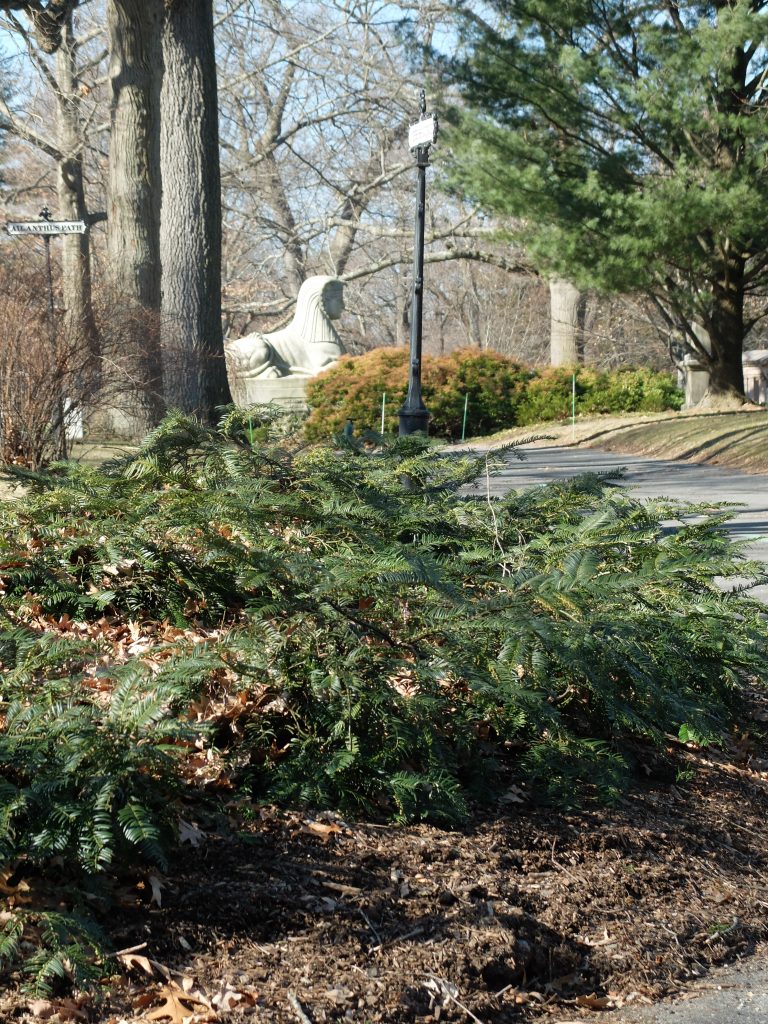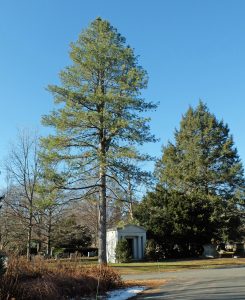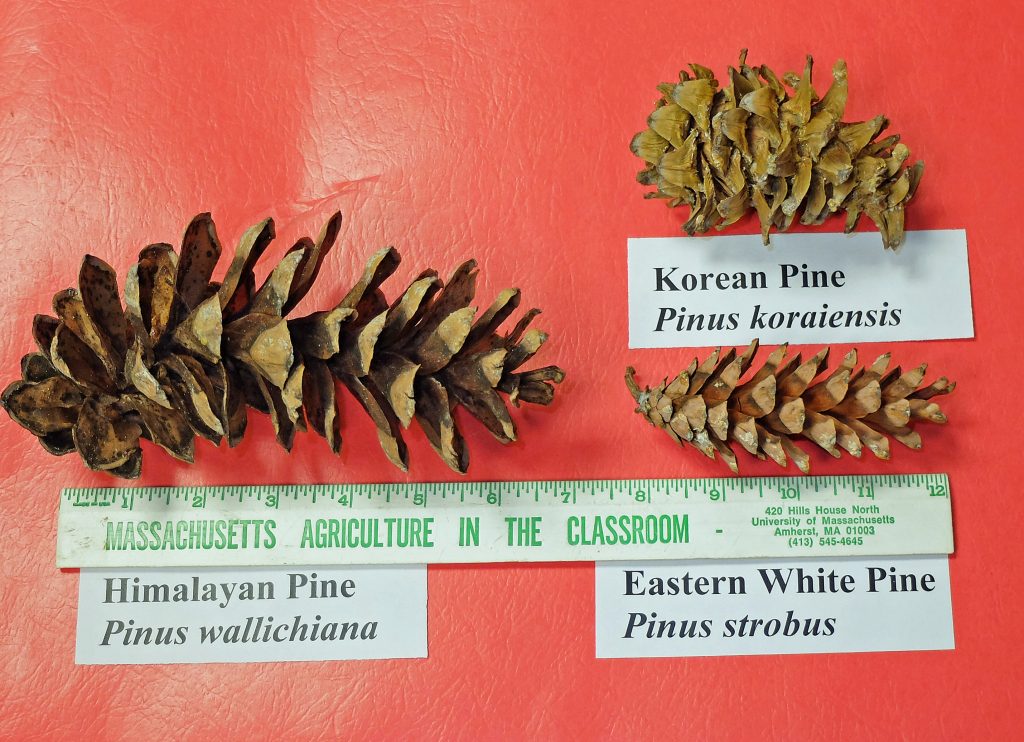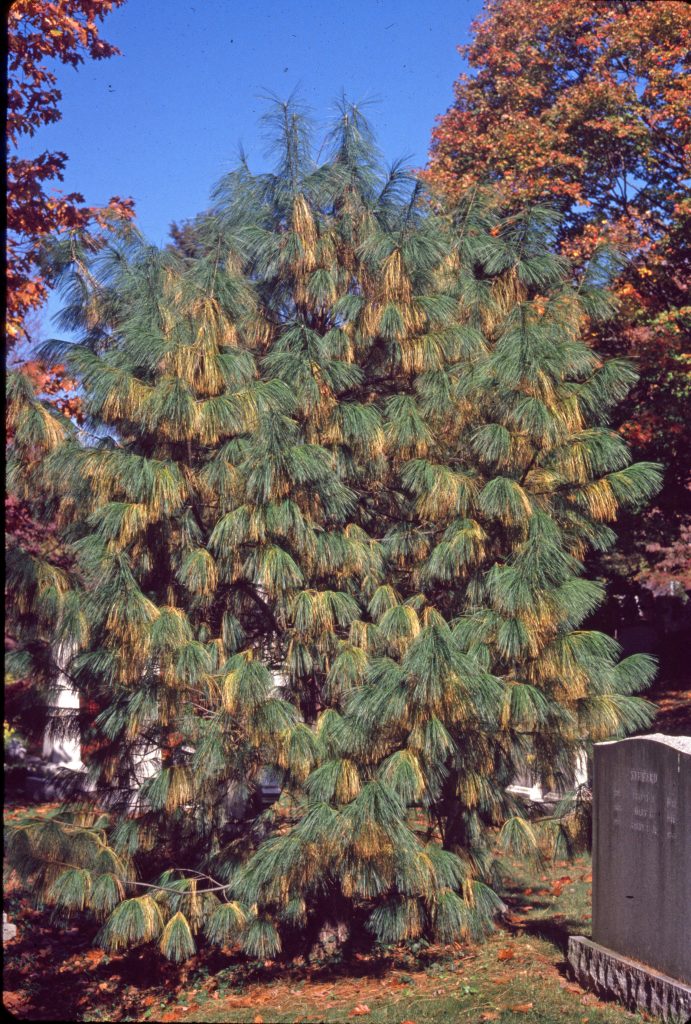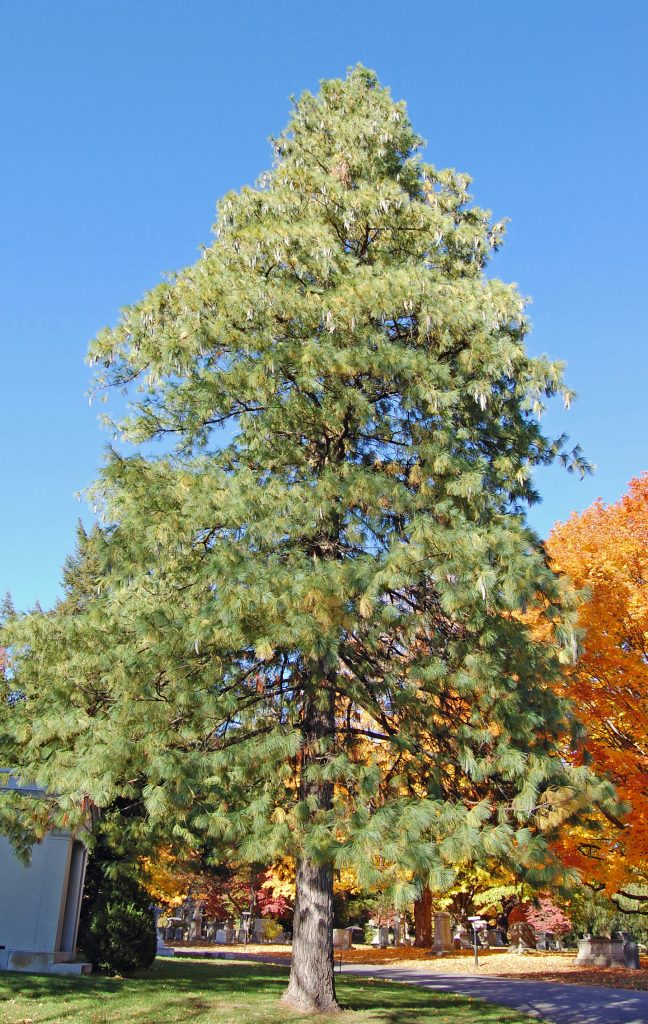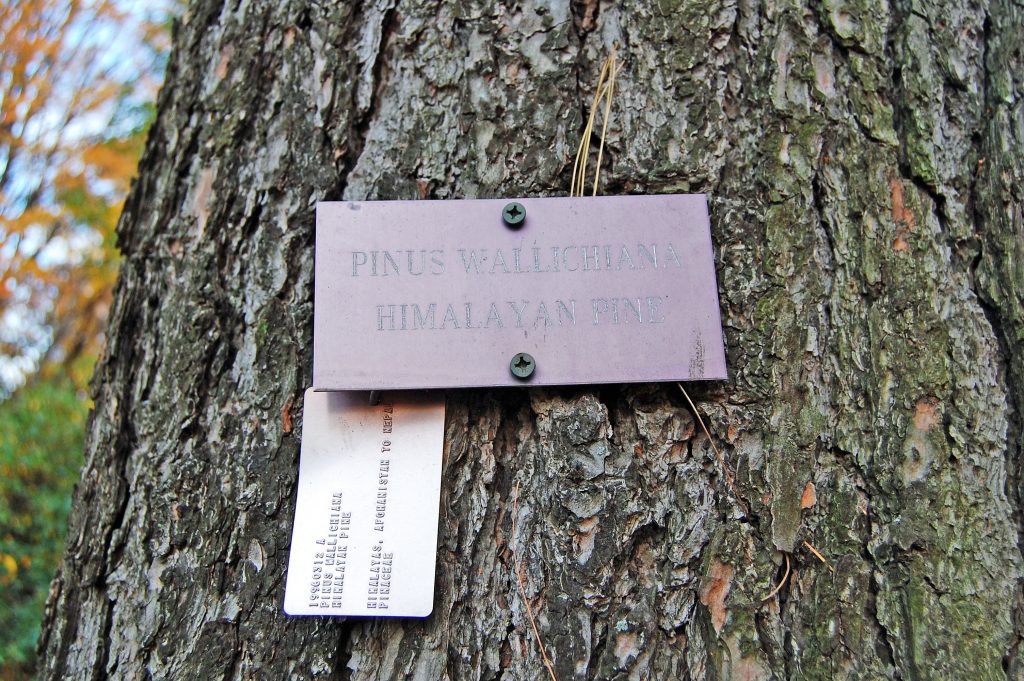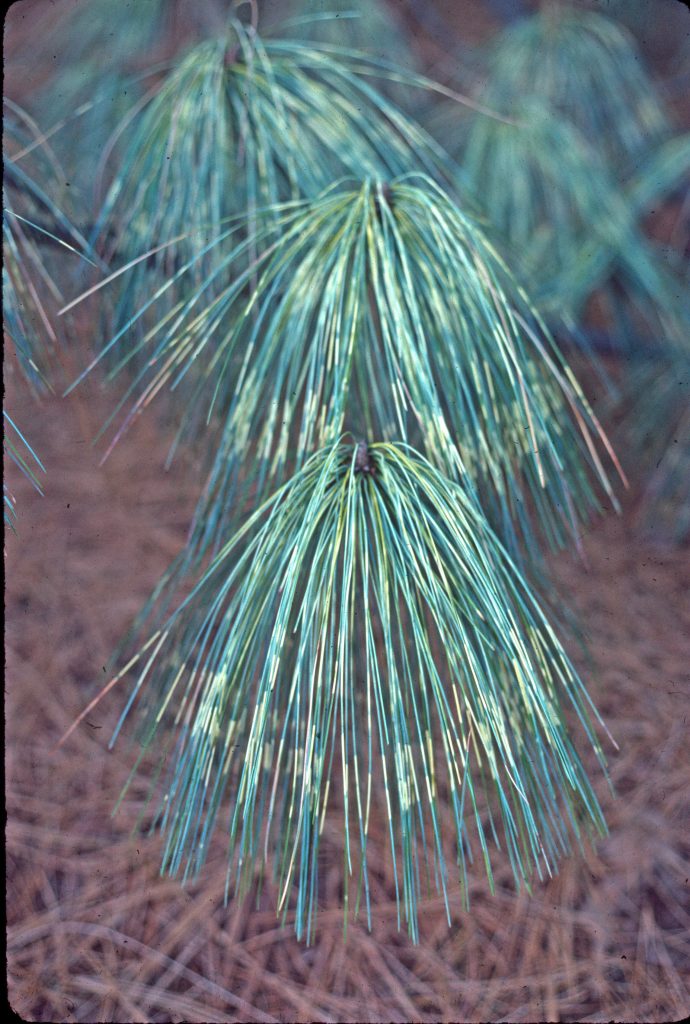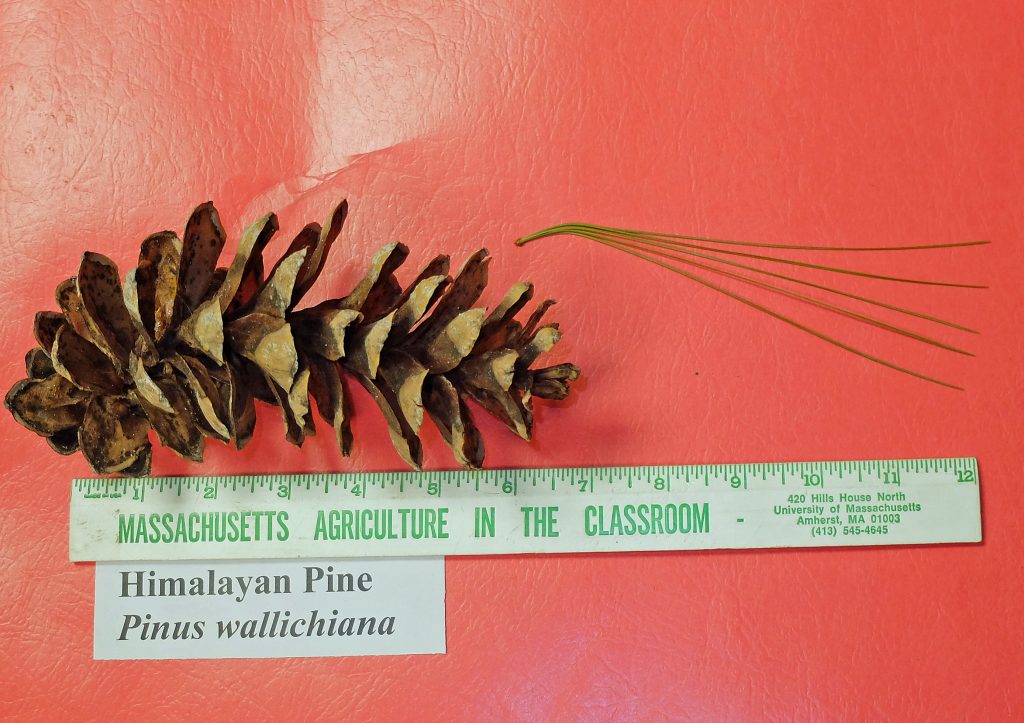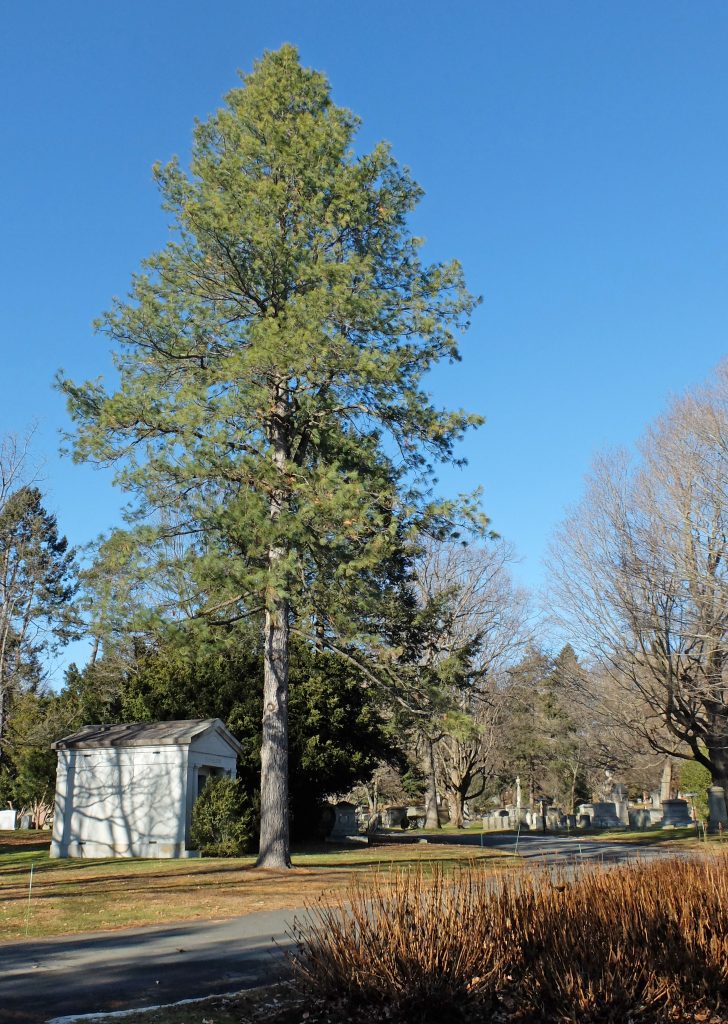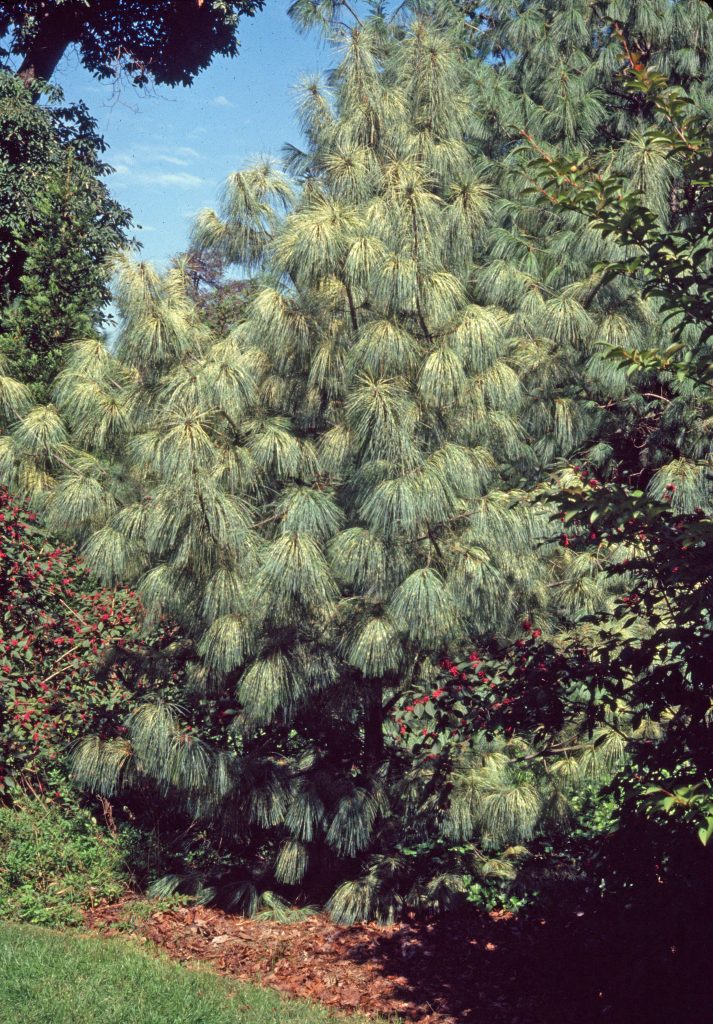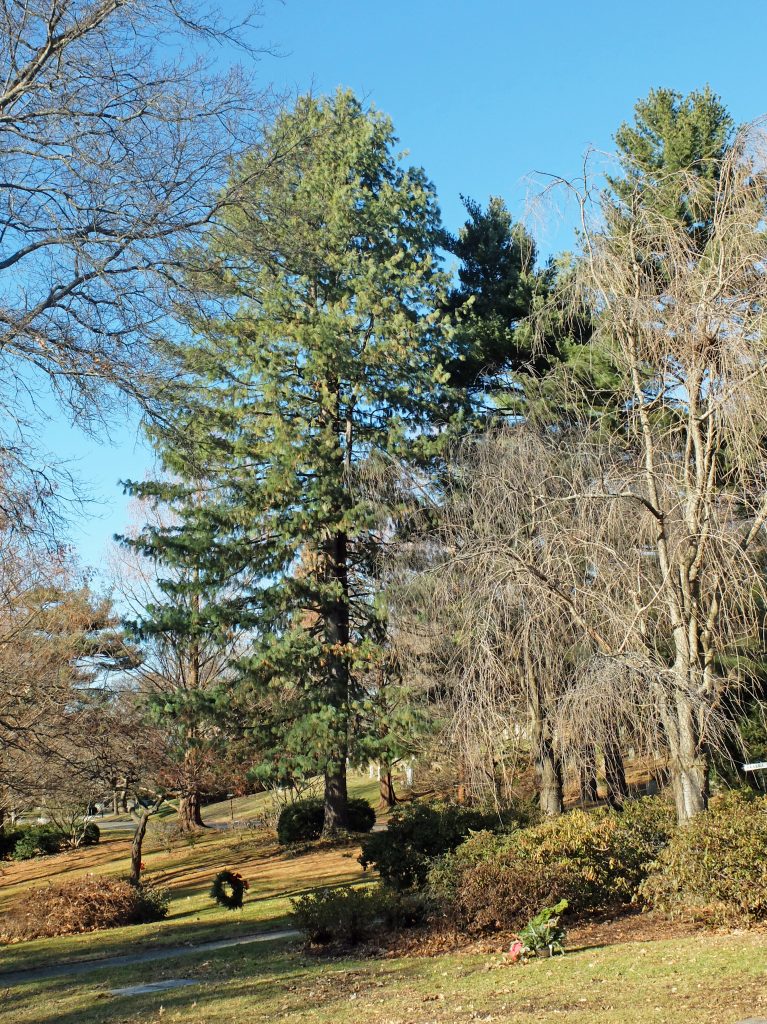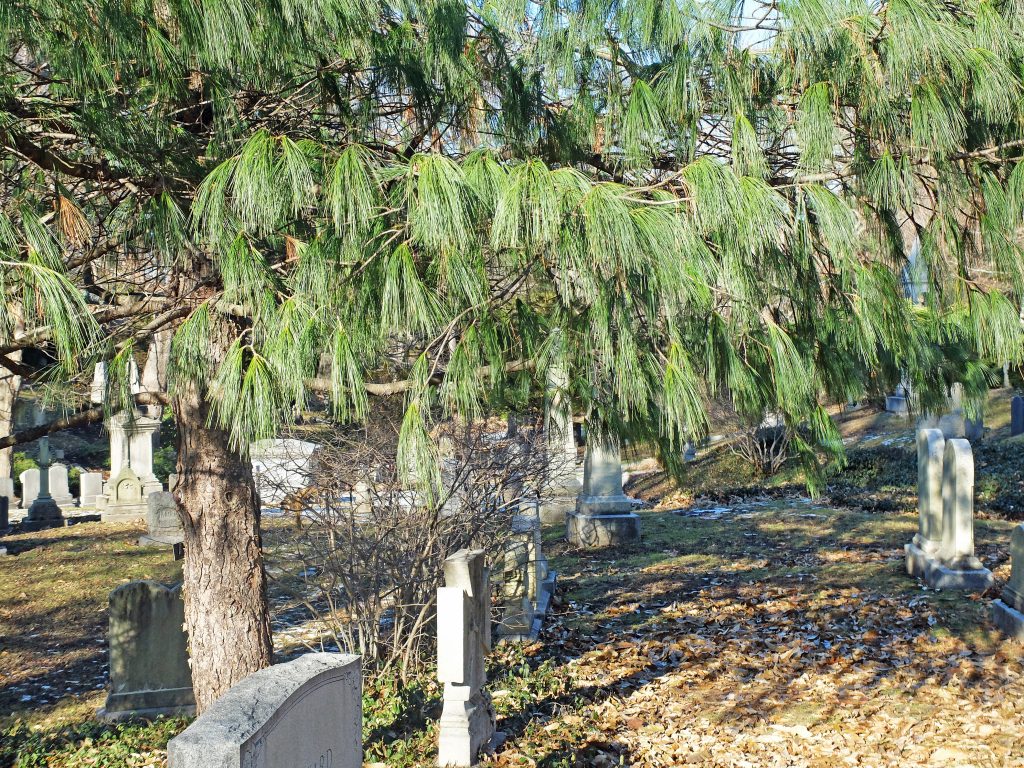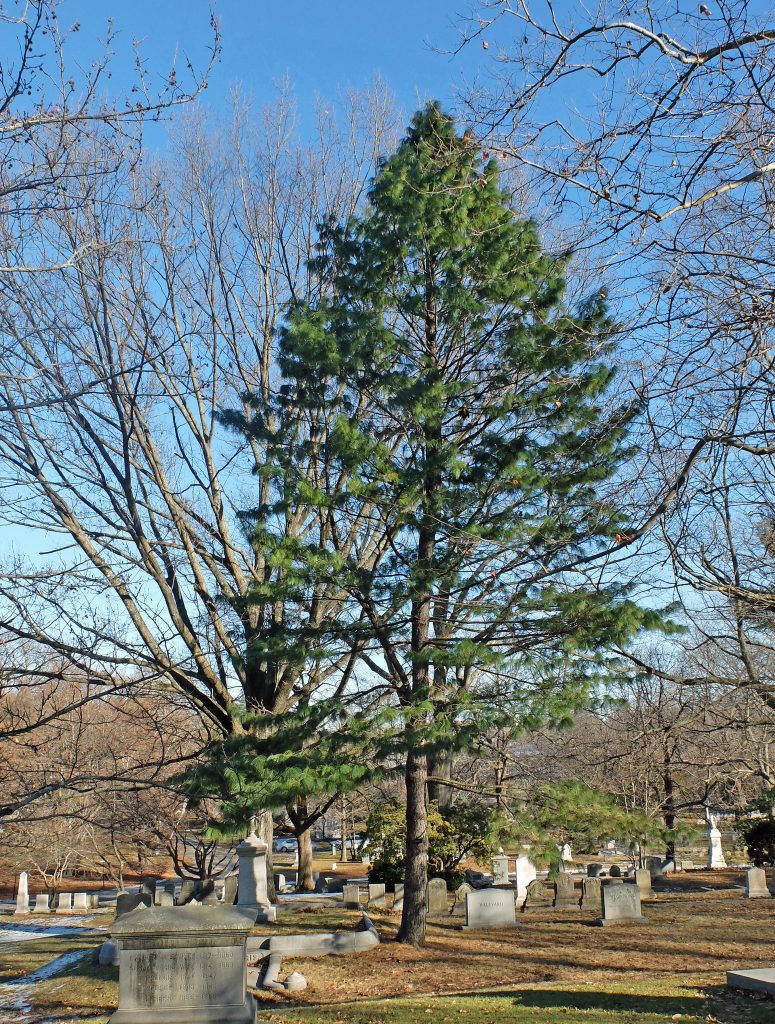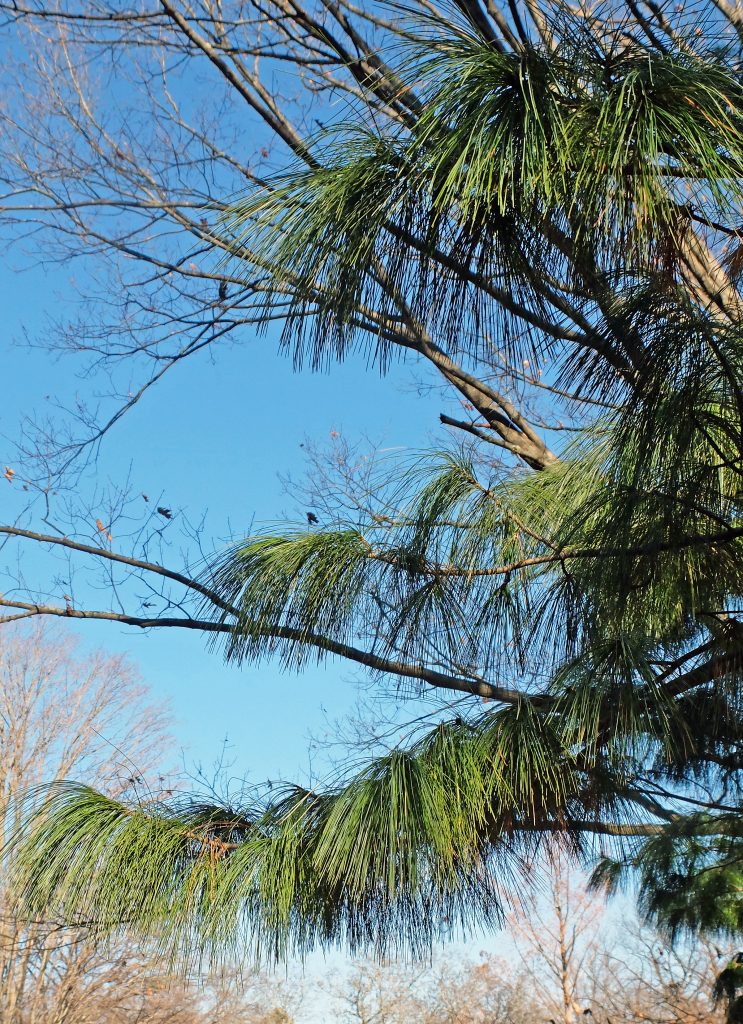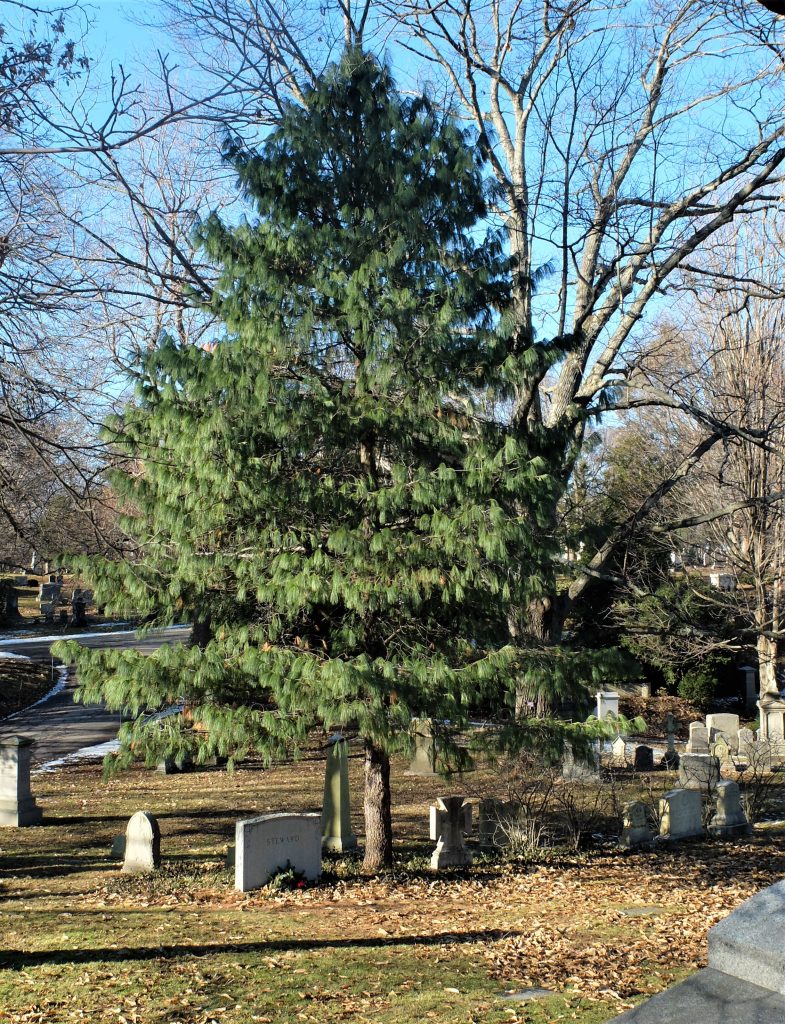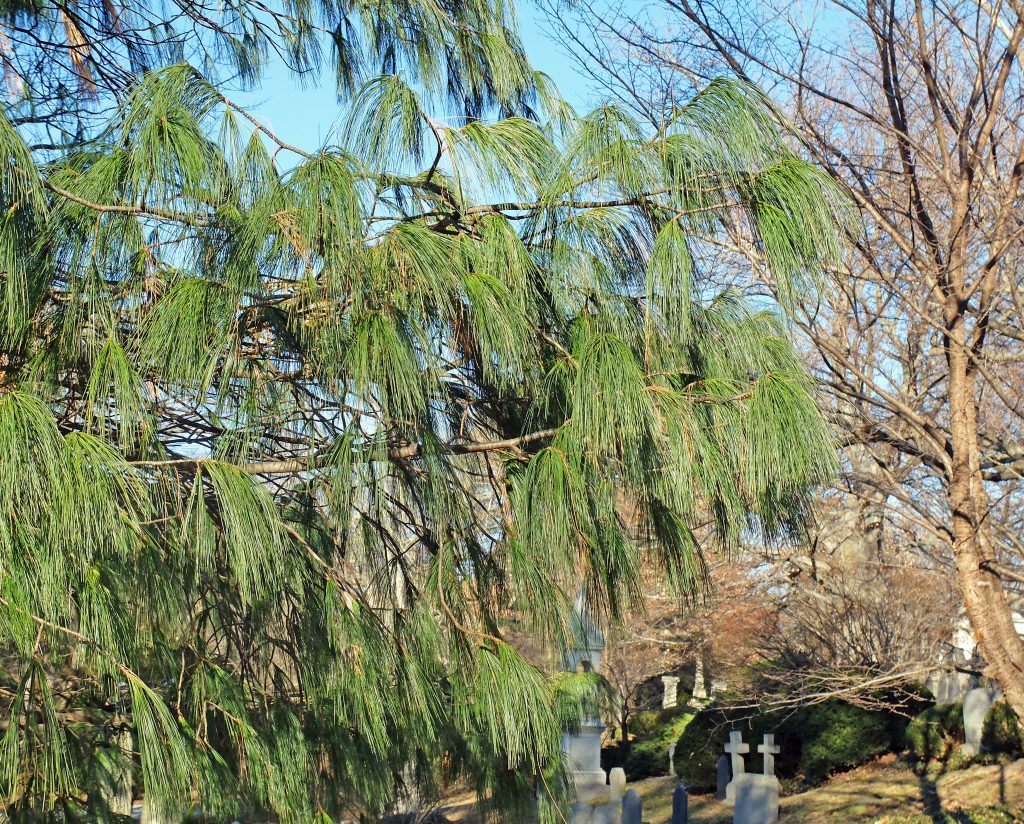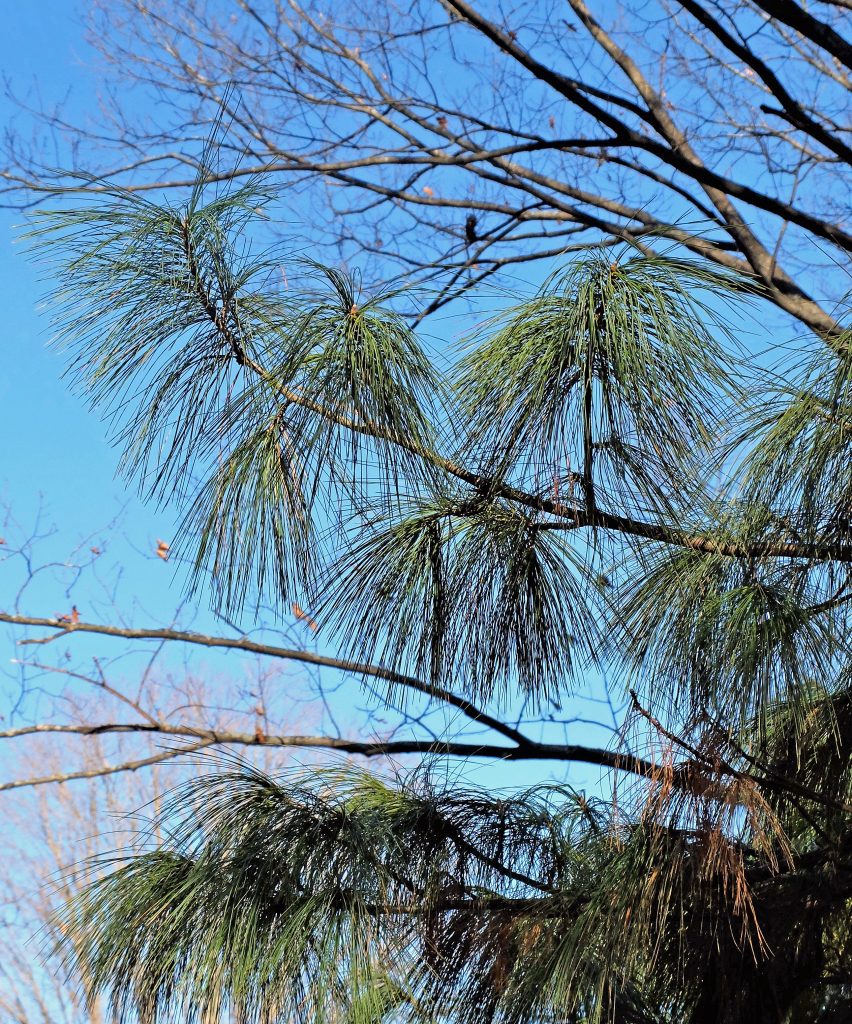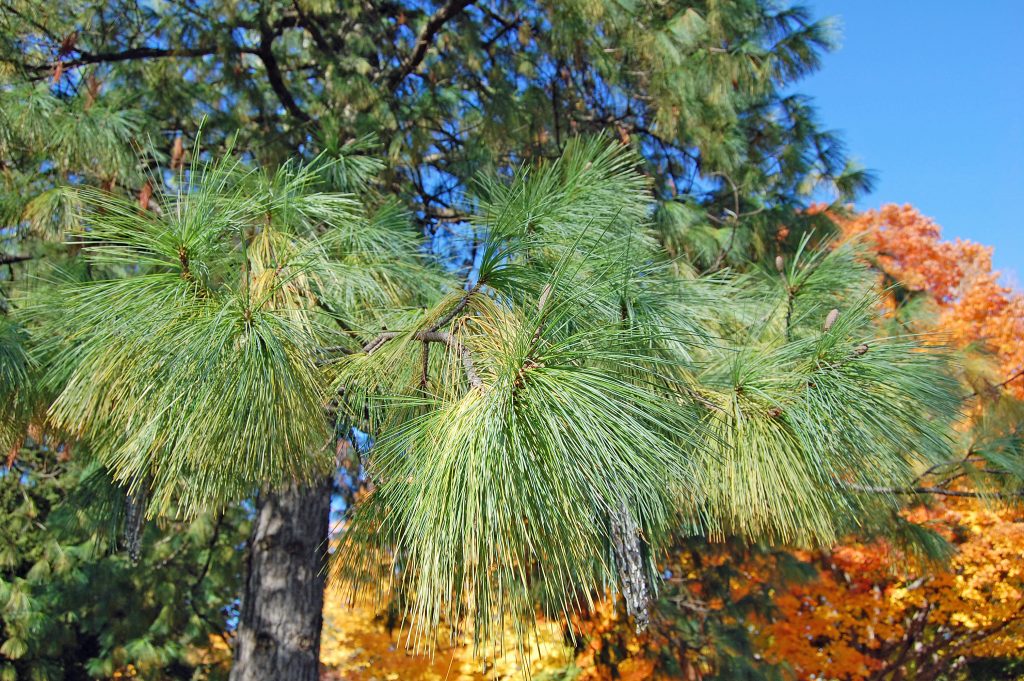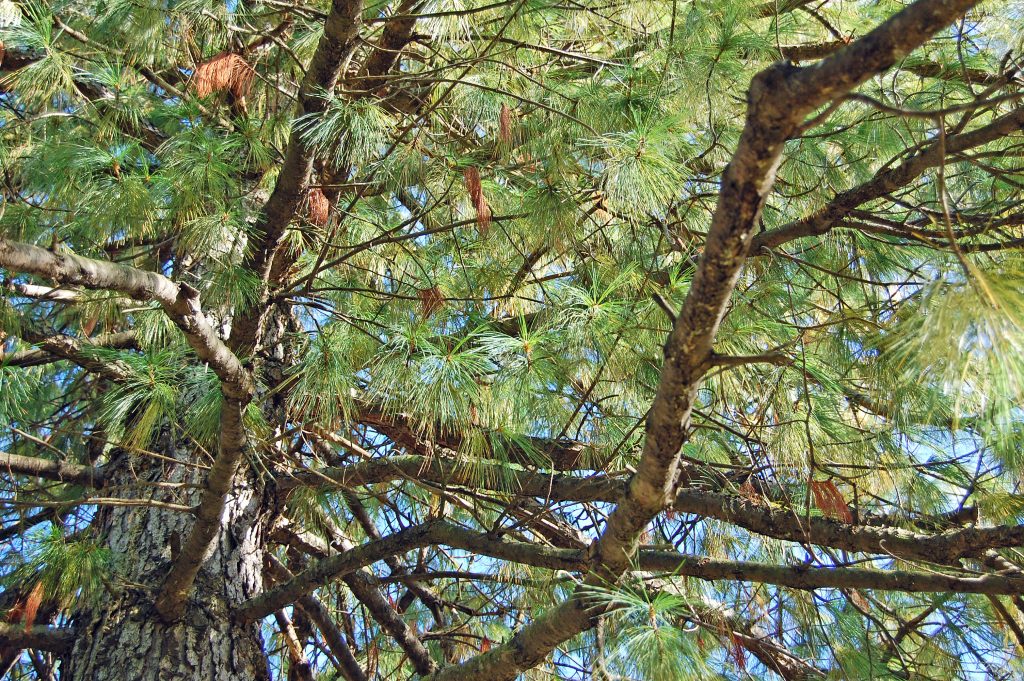Red-twig dogwoods
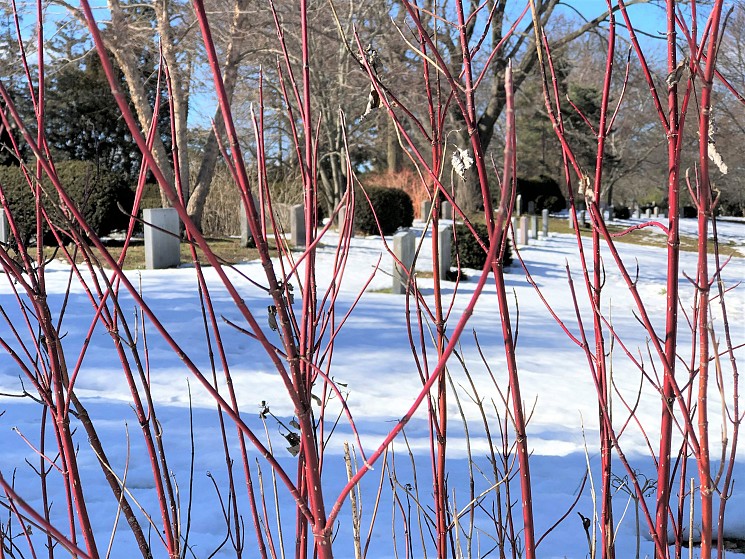
Horticulture Highlight: Red-twig dogwoods, Cornus sericea, Cornus alba
…Everyone longs for love’s tense joy
and red delights…
-Jane Kenyon
A sampling of red delights from past Horticulture Highlights could include blossoms of rufous-tinted hellebores, redbud, tree peony, azalea, rose, rhododendron, cardinal flower and mums, with the added autumn foliage of maple, franklin tree, Virginia sweetspire, sourwood, tupelo and fothergilla as a partial list.
However, none of the above provide their “red delight” display during our winters. So we look towards our red-stemmed or red-twig dogwoods, members of the genus Cornus. Many are familiar with America’s springtime flowering dogwood or Asia’s summer flowering kousa dogwood, fewer may also know the indistinctly named cornelian cherry. These three small trees are arborescent members of the botanical genus Cornus which includes far more numerous shrub species. Recent and ongoing taxonomic examinations allow the ambiguous fact stating there are 30 to 60 species within this genus.



None the less, herein we introduce two frequently planted species, each with notable red stem color during winter months, Cornus sericea, redosier dogwood of North America and Cornus alba, Tatarian dogwood from Siberia, Manchuria and northern Korea. Nearly indistinguishable, Michael Dirr, author of the inimitable Manual of Woody Landscape Plants, states therein “…the red-stemmed dogwoods are difficult to separate by winter characteristics especially as small plants and one is never absolute as to which species he/she is purchasing…”. The dominant winter characteristic referred to is a discernable color transformation of their woody stems from a greenish to a blood red, with many cultivated varieties exhibiting varied hues from bright coral to bold crimson to beet-red. All shades of red-twigs are strikingly enhanced when surrounded by snow.
Snow,
blessed snow,
comes out of the sky
like bleached flies.
The ground is no longer naked.
The ground has on its clothes.
The trees poke out of sheets…
-Anne Sexton
There are strong similarities in the appearance of leaves, flowers and fruits of these two species. The branching patterns are opposite as with most members (not all) of this genus. The 2-5-inch-long leaves of both species are smooth-edged (entire margin) with 5-6 pairs of veins curving parallel to the margins. Both provide an attractive reddish-purple fall foliage.
Unlike the large petal-like bracts found on flowering dogwood and kousa dogwood, flowers on these two species as with many other dogwoods appear as small heads of multiple whitish-yellow flowers forming a flat top referred to as a cyme. When successfully fertilized these flowers later develop ½-inch, whitish/slightly bluish fruits (drupes) that are relished by many bird species and hence are not long persistent.
On a winter visit to Mount Auburn look for our Red-twig dogwoods on Story Road, Willow Pond Knoll, Rosebay Avenue, above Narcissus Path, Anemone Path and off Meadow Road.
Horticulture Highlight: Cephalotaxus harringtonia, Plum yew
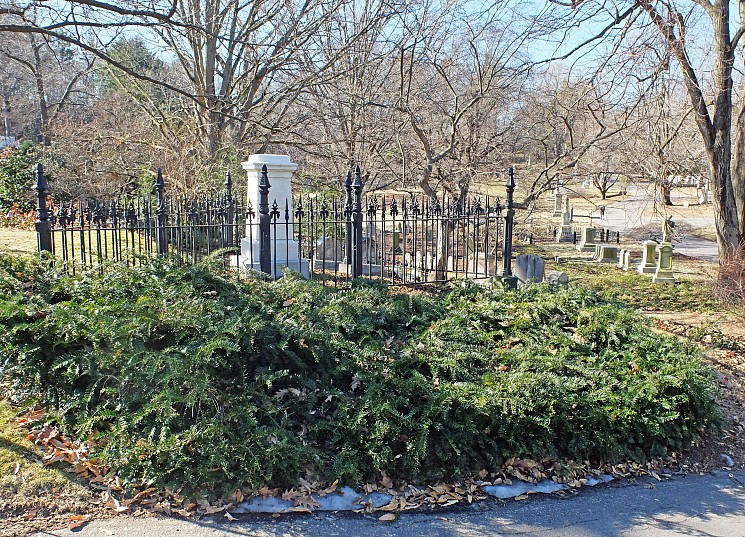
…you are so little
you are more like a flower
who found you in the green forest
and were you very sorry to come away?…
-e. e. cummings
Although small in stature Cephalotaxus harringtonia, Plum yew exceeds yew in ornamental quality. It has beautiful, glossy, dark green, evergreen needles, one-two-inches long. It is another genus that normally has male and female reproductive flowers on separate plants. The clusters of male strobili (flowers) appear on the underside of branch stems in April and are a yellowish-green color. When successfully fertilized separate female plants will produce a fruit containing a single seed surrounded by a purplish, flesh, which leads it to resemble a primitive olive.
(more…)Hamamelis xintermedia ‘Arnold Promise’
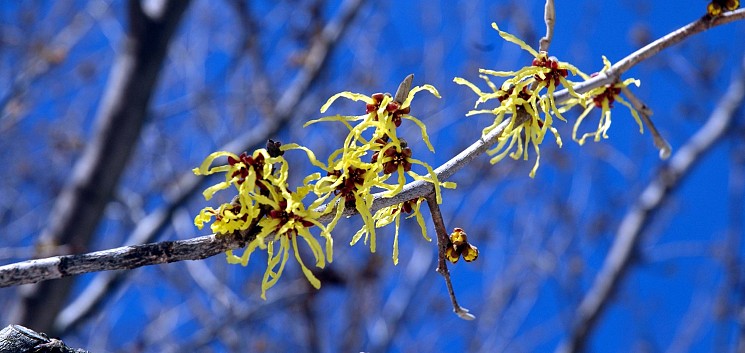
…when we plant a tree, two trees take root:
the one that lifts its leaves into the air,
and the inverted one that cleaves the soil
to find the runnel’s sweet, dull silver trace
and spreads not up but down, each drop a leaf
in the eternal blackness of that sky…
-Roy Scheele
Reprising our “who does your garden grow” theme, we might say that Hamamelis xintermedia ‘Arnold Promise’, the ‘Arnold Promise’ witch hazel provides us with two-for-one flora commemoration.
(more…)Himalayan Pine, Pinus wallichiana
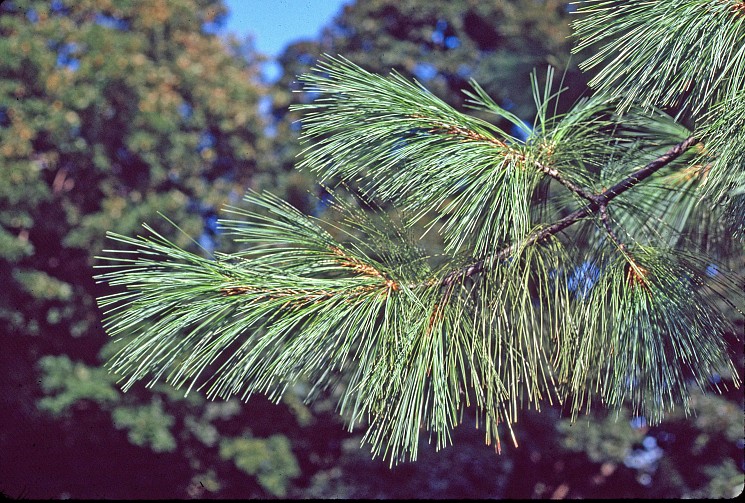
…She will love the smell. Pine. sage, cypress.
She will love the sound…
-Patricia Spears Jones
We return to a familiar theme, “Who does your garden grow?” With this theme in the past we have discussed the Cherokee chief Sequoia, Benjamin Franklin and the French botanist Pierre Magnol among others. Herein we focus on Pinus wallichiana, Himalayan Pine in tribute to a commonly unsung, even forgotten, plant collector-botanist, Nathaniel Wallich (1786-1854).
Himalayan Pine is a handsome, medium-size (30-50-feet) pine tree which grows at 6,000’ – 12,500’ elevation from eastern Afghanistan across northern Pakistan and India, Nepal and into southwest China. The large genus Pinus includes at least 110 evergreen species worldwide. When identifying most plants, a closer observation helps establish key visual clues. With pine leaves (needles) the individual needles occur in clusters (fascicles) mostly of 5’s, 3’s, or 2’s. Jeffrey pine and lacebark pine have needles in 3’s and Scotch pine and Austrian pine have needles in 2’s. Eastern white pine, bristlecone pine and Korean pine along with Pinus wallichiana, Himalayan Pine have needles in fascicles of 5’s. Pinus wallichiana, Himalayan Pine needles at 5-8-inches-long are longer than the other 5-needle species mentioned. Additionally, their needles are often slightly bent near the base helping to create a pendulous habit. To the viewer this provides a subtle, yet distinct graceful drooping of its branchlets.
Pine cones do vary in size and even shape on the same tree, as well as from different trees. However, in general the cones of Himalayan Pine are longer/larger than the other 5-needle pines covered here.
Danish born Nathaniel Wallich mirrors in some aspects Mount Auburn’s visionary founder, Jacob Bigelow (1787-1879). Each were trained physicians as well as outstanding botanists in their time and place. Wallich’s place was India, (beginning at East India Company) where he spent 34 years, mainly at the Calcutta Botanic Garden, established in 1787, more recently renamed Acharya Jagdish Chandra Bose Indian Botanic Garden.
During the same era that Jacob Bigelow was botanizing around Boston and even below the then trail-less summit of New Hampshire’s Mount Washington, Wallich was on plant collecting expeditions to Nepal, west Hindustan, Myanmar, Malaysia, Singapore, South Africa and Mauritius, resulting in important herbaria specimens and live plant collections. As Bigelow’s botanical publications were Florula Bostoniensis (1814, expanded 1822, greatly expanded 1848)and American Medical Botany (1817-1820), Wallich published Tentamen Florae Nepalensis Illustratae (1824-26), and Plantae Asiaticea Rariores (1830-32). Bigelow taught at Harvard Medical School, Wallich taught at Calcutta Medical College.
Wallich often sent herbarium specimens and live plants back to England’s Royal Botanic Garden at Kew. This during the later life of the great Sir Joseph Banks (1743-1820), who believed in the internationalism of science, and successfully caused almost every ship sailing to Britain from any British colony to carry plants. Today Kew’s herbarium contains around seven million preserved plant specimens. Housed separately from the main collection is that of the East India Company, the Wallich Herbarium, Kew’s largest separate herbarium. Another location of his important collections is the Central National Herbarium of the Botanical Survey of India in Kolkata. Besides Pinus wallichiana he was also commemorated in plant taxonomy with Taxus wallichiana, Ulmus wallichiana, Lilium wallichiana, Dryopteris wallichiana, Schefflera wallichiana, Geranium wallichianum, and Rubus wallichii, among others. Twenty different genera include species within them named honoring Nathaniel Wallich.
In 1829 at the second founding meeting of the Massachusetts Horticultural Society (MHS), to which Mount Auburn would soon owe its very existence, a committee was chosen to create a list of honorary and corresponding members. This exemplary first list included notable botanist, Augustin P. de Candolle (1778-1841), presidents of the Pennsylvania, New York, London, Paris Glasgow Horticultural Societies, as well as plant curators at Kew, Liverpool and Wallich, curator of the Botanical Garde at Calcutta, among others.
Fittingly Oakes Ames (1893-1970), Mount Auburn’s eighth president (1934-68), writing in his 1952 Mount Auburn’s Sixscore Years provides our closing citation, “…the records of the Horticultural Society are strangely silent…However…New England Farmer for 1833 and 1834…we learn that…over a hundred varieties of seeds including Himalayan Pine and Deodar Cedar, from Mr. Wallich of the Botanical Garden at Calcutta…” were delivered to MHS.
Lamentably MHS’s Mount Auburn’s plant records from 186-years ago were not to our current standards and the germination success of Wallich’s seeds are left to our imaginations.
On a future visit to Mount Auburn remember this notable plant collector as you look for fine examples of Himalayan Pine on Crystal Avenue, Alder Path, Spelman Road and Petunia Path among other location.









